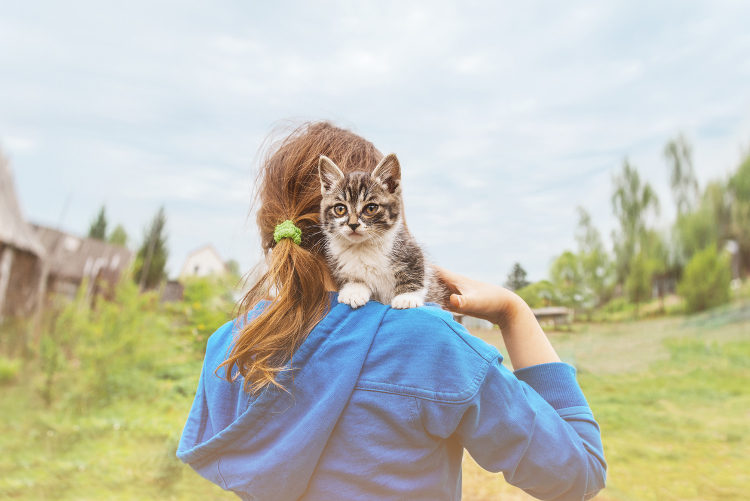My cat, Angus, can paw through a roll of toilet paper like nobody’s business. He takes reduce, reuse and recycle very seriously, ingesting said paper products and instantly regurgitating them on the nearest carpet (but never ever the nearby hardwood floor, as that would be too easy). As Earth Day approaches and I review my own consumption, I wonder; how can I reduce my kitties’ carbon paw-print?
CONSUMPTION IS KEY
Angus glances up from his perch as I lug a heavy bag of food into the apartment. He turns away, oblivious to the lengths I go to for organic, environmentally-friendly food. When choosing cat food, one thing I make sure to check on the ingredients list is a protein: lamb, chicken, salmon, beef. Not ‘chicken meal’ or any other ingredients I don’t recognize. Providing your cat with quality food not only improves their health but reduces their waste. Remember – cats are just like us, and no one can subside on McDonald’s every day, unless you’re that guy in ‘Super Size Me.’ Plus, taking care of their health now will reduce issues later.
The Honest Kitchen specializes in providing organically produced pet food sourced from humanely-raised meats and wild-caught fish. Another thing to check is the packaging. They cover their bases by packaging everything in BPA-free, recycled packaging. Consumer choices play a major role in reducing your animal’s carbon imprint. From toys to food to eco-friendly pet furniture, many choices are available for today’s pet owner. There are numerous sites, including olivegreendog.com, which specializes in producing eco-friendly pet products.
DIY MEALS
We use tinned wet food for breakfast and dinner. That’s a can a day going into the recycling. Though it’s a lot more work, one way to reduce this waste is to cook for your cat (says the girl who would die of malnutrition if it weren’t for Trader Joes salads). There is a myriad of recipes online for kitty, most of which include high-protein, low carbohydrate meals. This is a great way of ensuring your cat gets his 60 to 80 percent protein every meal. For the kitchen-averse crowd, a raw food diet is a great way to go. While more expensive, the meats and poultry are generally sourced from local organic meats.
CHECK YOUR PAW-PRINT
Sometimes small changes can add up to big savings for mother Earth. You can check where you and your pet stand by entering in the applicable data on www.theecoguide.org, which tells you your actual carbon imprint. Hot summers require more energy usage to keep kitty cool. Simple tricks like leaving the blinds closed can keep your home on the cooler side, allowing you to run the air conditioning less and reducing your overall carbon imprint. For those of us with some cash to invest, Elon Musk just introduced a new line of solar panel roofing, which are comparable to the price of a new roof, take you off the grid and let’s face it – anything that man invents is pretty badass.
GOING BACK TO NATURE
Any plant that enters our home is generally massacred but most homes with well-behaved kitties can receive the oxygen benefits from your average houseplant. If you want to get kitty a real treat, plant some kitty grass or catnip plants. Cat grass also settles the stomach (or in Angus’ case, unsettles it) and provides some stress relief. You can also plant a cat botanical garden with cat-safe herbs that can do everything from reduce allergy symptoms to calming anxious cats.
STEP BY STEP
Try changing one thing about your consumption habits. Whether it’s starting with organic, locally sourced products or selecting eco-friendly cat toys, you and mouser will be making a difference.







Roughly defined carbon footprint is the amount of greenhouse gas emitted by a person or population over a certain period of time. So consider being more eco-friendly with these 25 ways to reduce your carbon footprint.